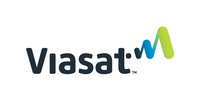Huawei has been busy. The company this week unveiled a new eLTE SmartGrid solution to accelerate the digital transformation of electric power companies and recently demonstrated dynamic spectrum sharing with Turkcell.
The company said its eLTE SmartGrid solution leverages 4.5G cellular wireless communication technology to deliver three benefits: fully connected electrical equipment and the ability to read a massive amount of grid data, data transmission with industrial-grade reliability and security, and measurable smart grid management. The solution will be mainly used in distribution automation (DA), advanced metering infrastructure (AMI), and preventive maintenance inspection on sub-stations, as well as online monitoring of grid facilities.
Huawei indicated the networks enable online operations and monitoring of all power distribution nodes and terminals, enable quick fault location and the adjustment of power distribution solutions, significantly improve the reliability and quality of power supply, and implement fully intelligent grid management. These can all lead to large reductions in manual labor costs, the company said.
Huawei’s eLTE SmartGrid solution has been commercially deployed in China, and will be further rolled out in other regions around the globe.
The company at the end of last week also said it completed a verification of its GU@5MHz solution for dynamic spectrum sharing between GSM and UMTS on commercial networks in Turkey with wireless carrier Turkcell. Huawei said the demonstration boosted spectrum efficiency by 20 percent.
Using the solution, Huawei said Turkcell can deploy ubiquitous U900 without worrying about losing GSM traffic. The test result showed that MBB coverage enhanced by 4dB and MBB throughput increased by 20 percent, while GSM network quality improved by 30 percent relatively due to the uplink CoMP algorithm applied in 2G.
Huawei’s GU@5MHz solution has already gone live on eight commercial networks, and the company said 10 more operators are in discussions with Huawei about commercial verification.
Sprint announced an expansion of its presence and investment in Texas with plans to add more than 550 new jobs and 79 new retail locations across the state by the end of 2017. The new jobs will include a combination of retail, operations, and technical experts, the carrier said. Currently, Sprint counts more than 2,700 employees and operates nearly 350 retail locations throughout the Lone Star State.
At NAB’s 2017 show in Las Vegas, Adobe released its State of Digital Video report, which noted the first-ever decrease in consumers watching content via mobile.
According to the report, the mobile share of viewing dropped below 50 percent for the first January in TV Everywhere history, dipping from 54 percent in January 2015 to 46 percent in January 2017. TV Connected Devices (TVCDs), however, gained share, hitting 32 percent in January 2017 from 20 percent in January 2015.
Mobile remain the devices of choice during the day and primetime hours, but TVCDs dominate the evening hours, the report also found.
The full report can be found here.
Ericsson is focusing on media enrichment, media processing and delivery, and media publishing at NAB 2017. The company will demonstrate how software, cloud services, global platforms, data-driven outcomes, and intuitive and immersive experiences are enabling all providers to differentiate and compete in the new era of television.
Ericsson is debuting its dynamic ad insertion solution for over-the-top (OTT) streaming, Ericsson MediaFirst Stream Personalization, which is said to provide content uniquely tailored to an individual. It can work across multiple formats and with any player, offering the capability to insert ads in HLS, Smooth Streaming, and MPEG-DASH. In addition to performing frame-accurate ad insertion and content replacement from the network, MediaFirst Stream Personalization offers usage logs, which, when coupled with analytics, reportedly enables a deeper understanding of audiences and more accurate business intelligence.
Ericson’s booth will also highlight advancements in immersive multi-TV VR and 8K 360-degree video experiences, enabled by the company’s media processing and delivery technologies. It also will show a solution for the integration of IoT devices with the Ericsson MediaFirst TV Platform, which uses the TV interface as the control center of the smart home. Another solution featured at the company’s display is AR sports graphics that are said to enrich viewers’ experiences with additional data.
Filed Under: IoT • IIoT • Internet of things • Industry 4.0, DIGITAL TRANSFORMATION (DX), Infrastructure




